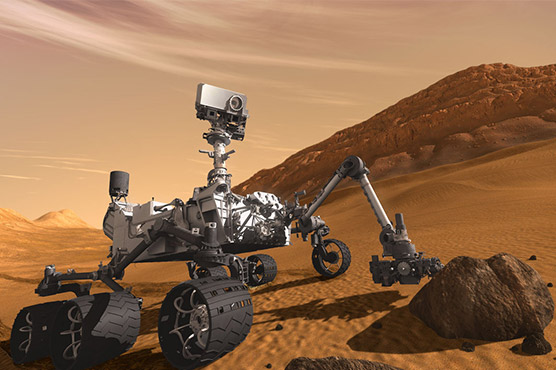PARIS, July 30, 2020 (BSS/AFP) – The six-decade space race to
explore Mars has led to some 40 missions, at least half of which have
been successful, and still the Red Planet inspires new adventures.
With US space agency NASA’s latest Mars rover Perseverance launch
on Thursday, here is a look back at some key missions over the last 60
years:
– 1960-1964: Soviet failures –
The Soviet Union leads the way, sending probes from 1960, just
three years after it launched its first artificial satellite Sputnik
I.
But it clocks up a string of failures, including Marsnik 1 and 2,
the first two probes launched in October 1960, which do not reach the
Earth’s orbit.
Zond 2 launched in 1964 is the first probe to get close to Mars,
although it does not manage to carry out an observation of the planet.
– 1965: Mariner 4 flies over –
On July 15, 1965, US vessel Mariner 4 makes history when it flies
over the Red Planet. It sends back about 20 photographs revealing a
desert-like surface dotted with craters.
– 1971: first satellite –
Mariner 9 in November 1971 becomes the first satellite to travel
around Mars, providing a detailed photographic map showing traces of
volcanism and river erosion.
In December the Soviet Mars 3 is the first spaceship to make a
soft-landing on the planet but it stops transmitting some 20 seconds
later.
– 1976: complete missions –
The US is the first nation to make vessels function on Mars: in
July 1976 Viking 1 is the first spaceship to successful land on the
planet and complete its mission.
It is followed in September by Viking 2.
Their combined missions allow them to collect more than 50,000
photographs and show there was no sign of life on Mars.
– 1997: data drive –
Exploration to Mars picks up again in the 1990s, but with mixed
results: seven probes are lost.
But NASA enjoys two successes, both in 1997.
In July, Mars Pathfinder places the robotic rover Sojourner on the planet.
Then in September Mars Global Surveyor, launched a year earlier,
enters orbit and goes on to study the entire surface, atmosphere, and
interior of the planet.
Both Pathfinder and Surveyor collect detailed data and detect the
presence of minerals.
– 2003: Europe’s Mars Express –
The European Space Agency sends the probe Mars Express, which
circles the plant from December 2003 and remains in operation.
But the craft’s mini-lander Beagle 2 never shows sign of life,
though it was seen on the planet’s surface in January 2015.
– 2004: Spirit and Opportunity –
Two US geological robots, Spirit and Opportunity, are placed on
Mars in January 2004 for a successful mission lasting until 2010 and
2018 respectively.
Opportunity clocks up the longest extraterrestrial distance ever
travelled at 45 kilometres (28 miles) and sends back more than 200,000
images, and discovers traces of humidity in the atmosphere.
– 2012: Curiosity, still working –
The US robot Curiosity lands in August 2012 and is the only vehicle
still in operation on Mars.
It has shown the planet was once suitable for microbial life and
should be potentially habitable.
In May 2008, Phoenix, another US vehicle, investigates permafrost
on Mars and confirms the presence of frozen water.
– 2014: India, cheaper and faster –
India successfully puts a probe into orbit in September 2014.
The Mars Orbiter Mission aims to measure the presence of methane on
the Red Planet and was produced at a low cost and in record time.
– 2020 and beyond –
The Russian-European mission ExoMars due to send a robot to drill
the ground on Mars in 2020 has been postponed to 2022 following
technical difficulties and the pandemic.
But three other Red Planet missions have taken place in July.
The United Arab Emirates on July 20 launched its Hope probe to
Mars, becoming the first interplanetary mission from the Arab world.
Three days later China launched its rover to Mars as part of the
mission Tianwen-1.
And on Thursday NASA’s Perseverance launched from Cape Canaveral,
Florida on board a United Launch Alliance Atlas V rocket.



